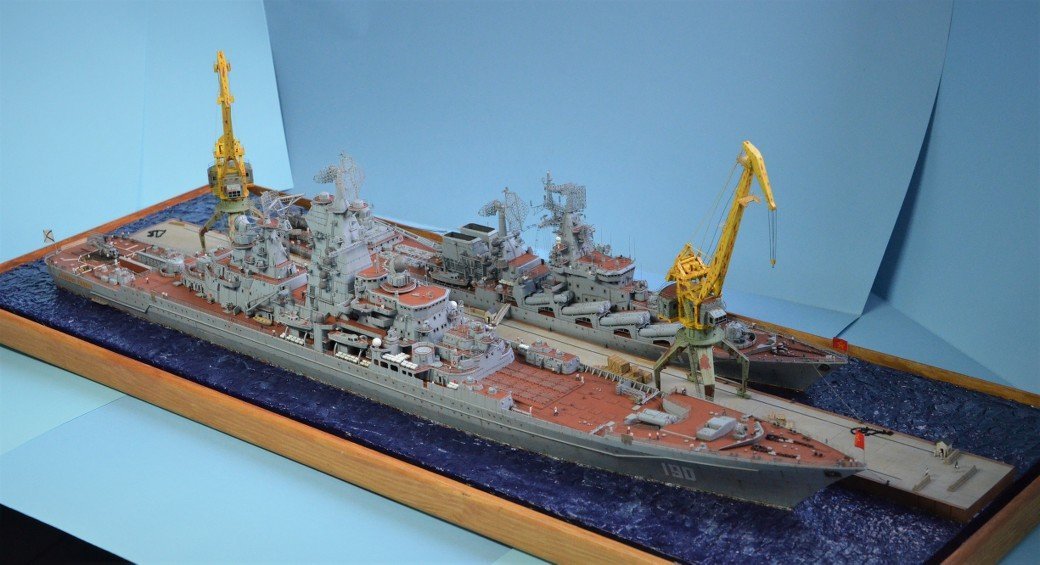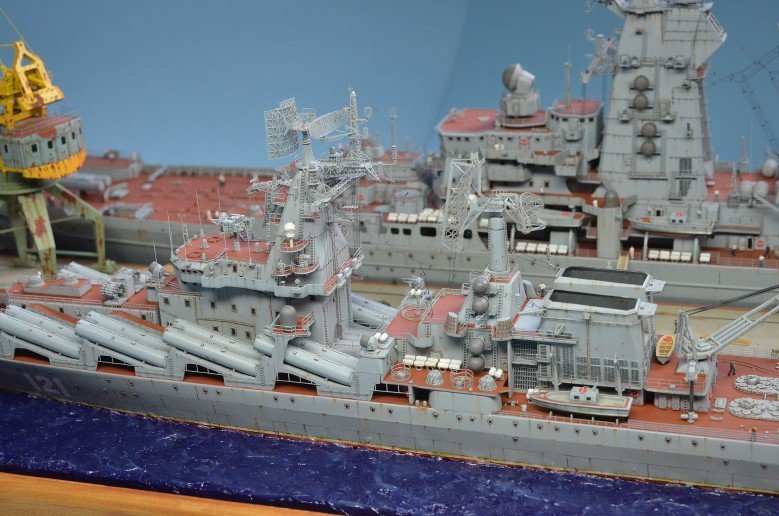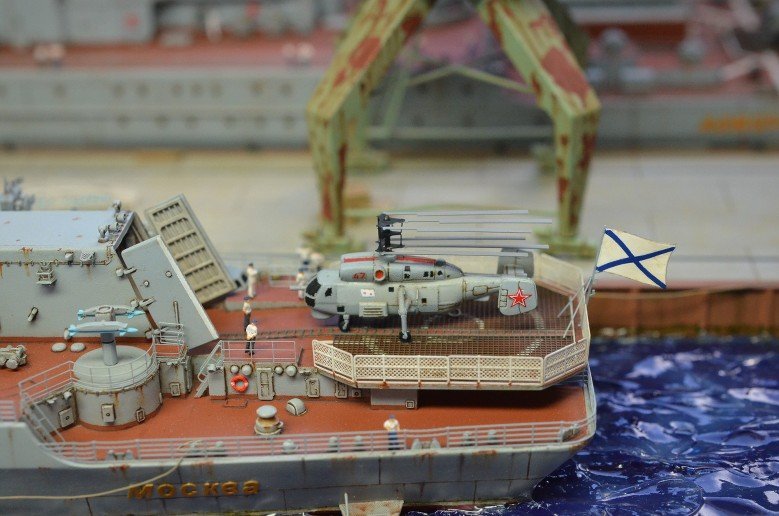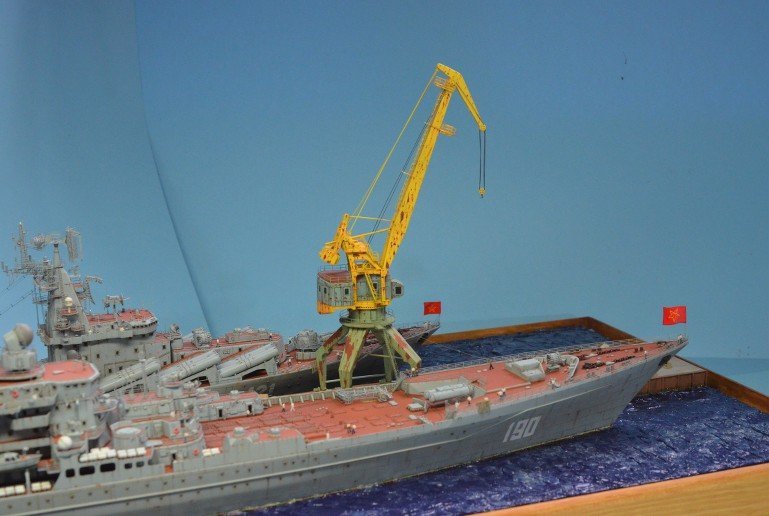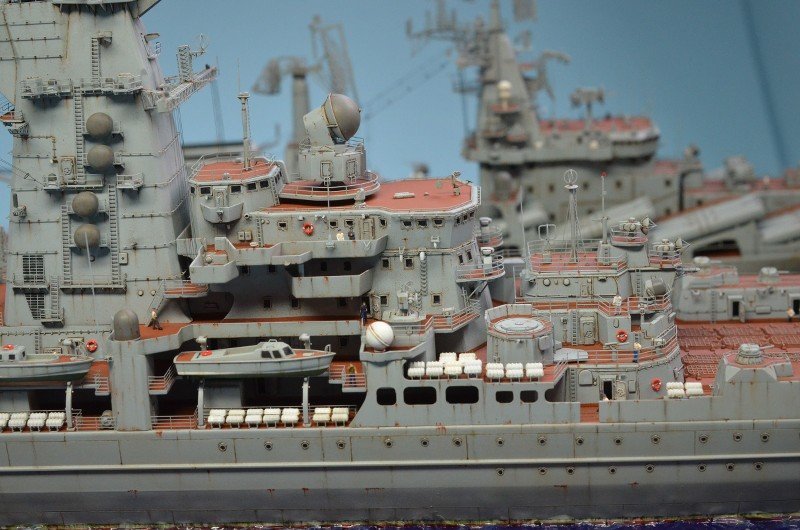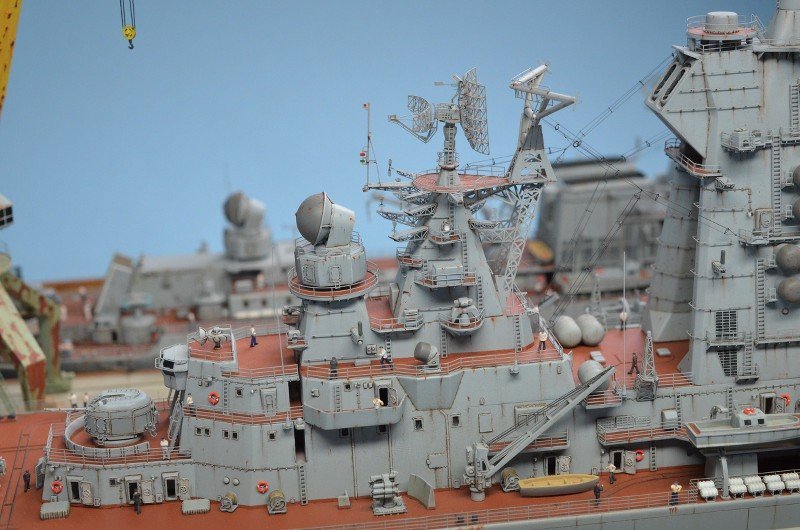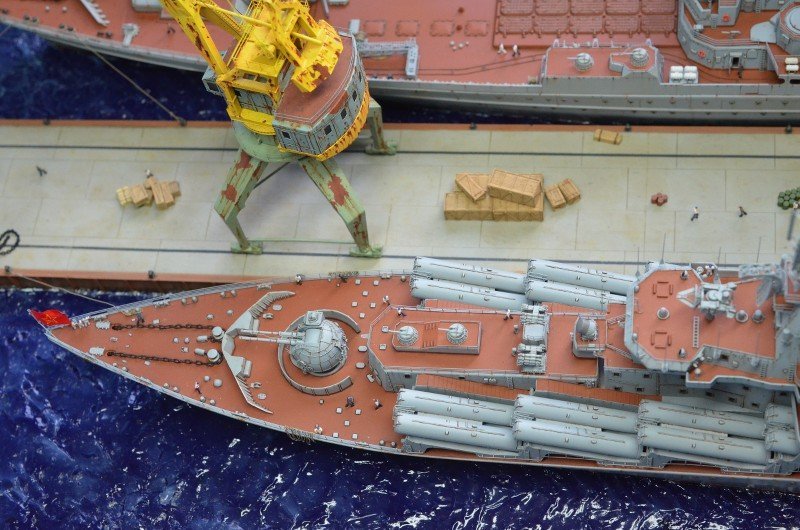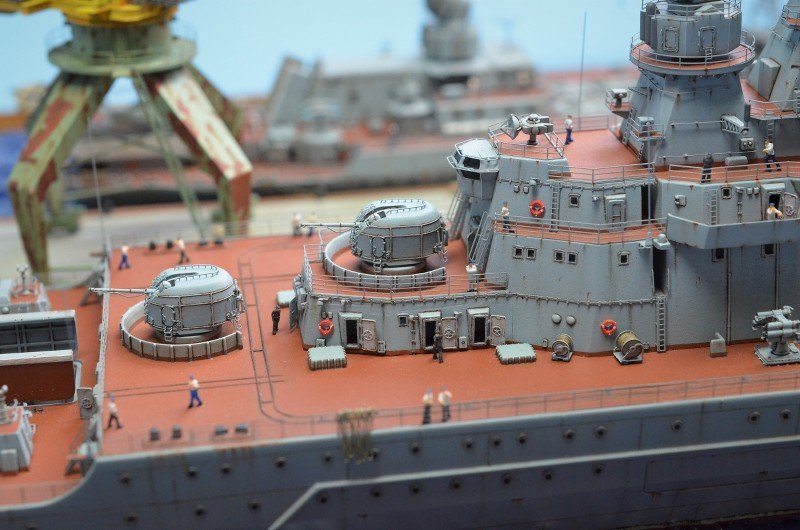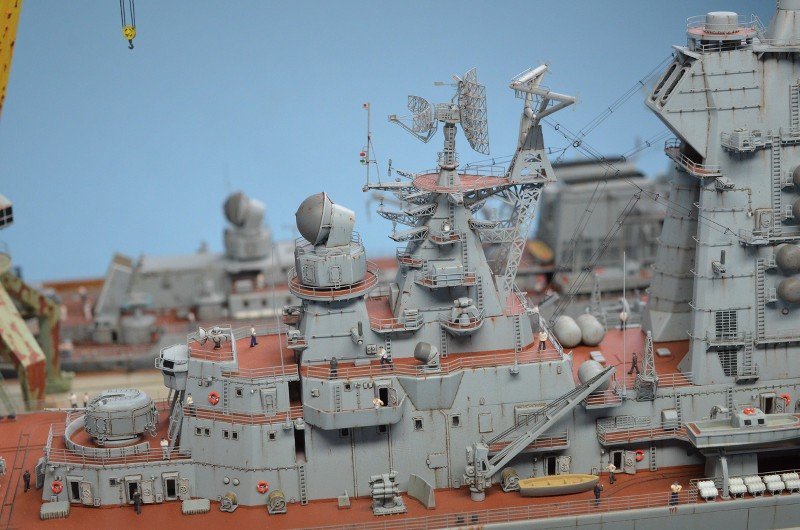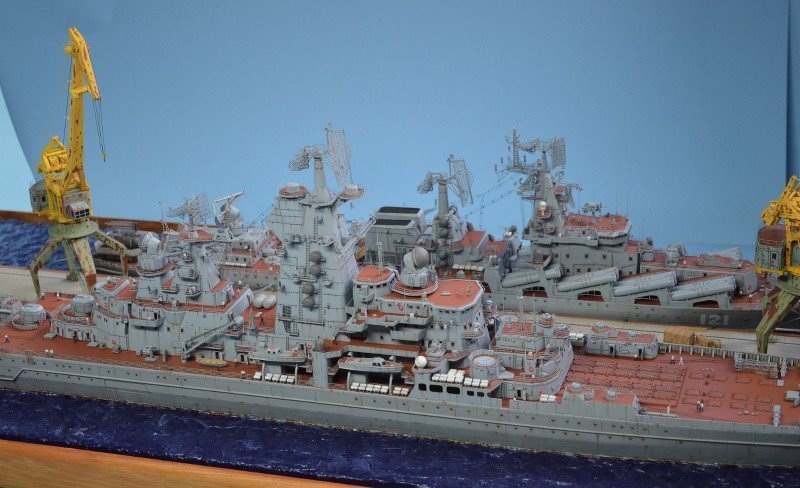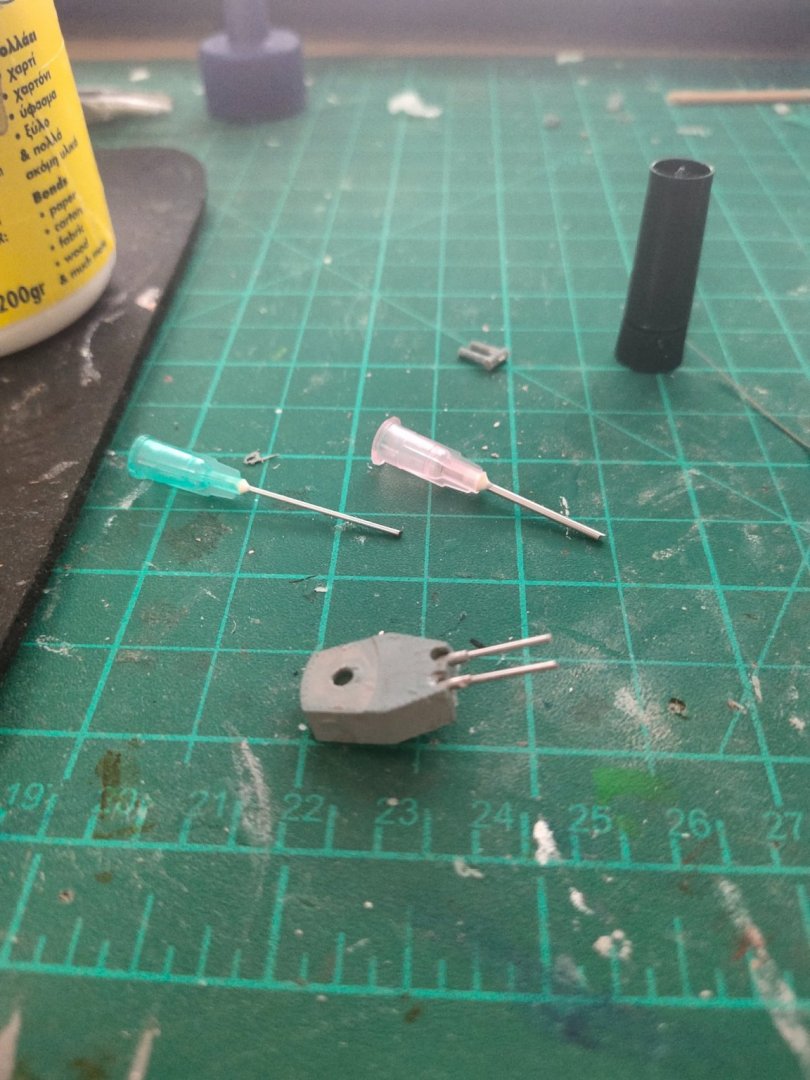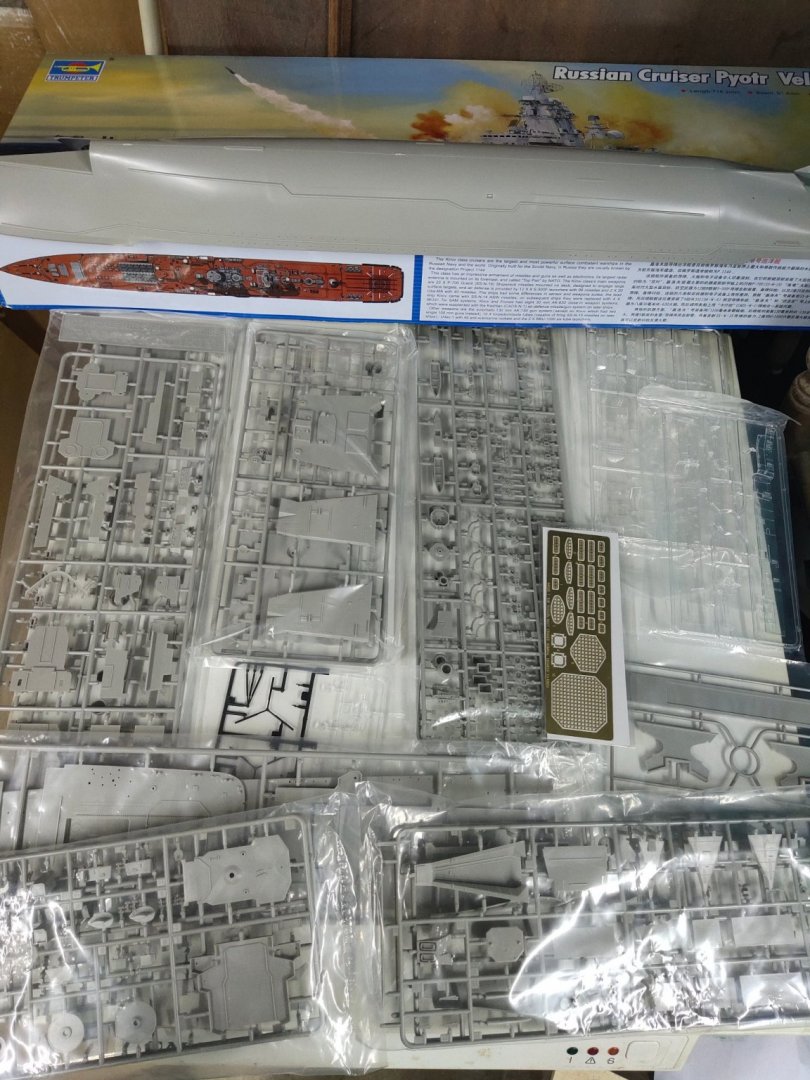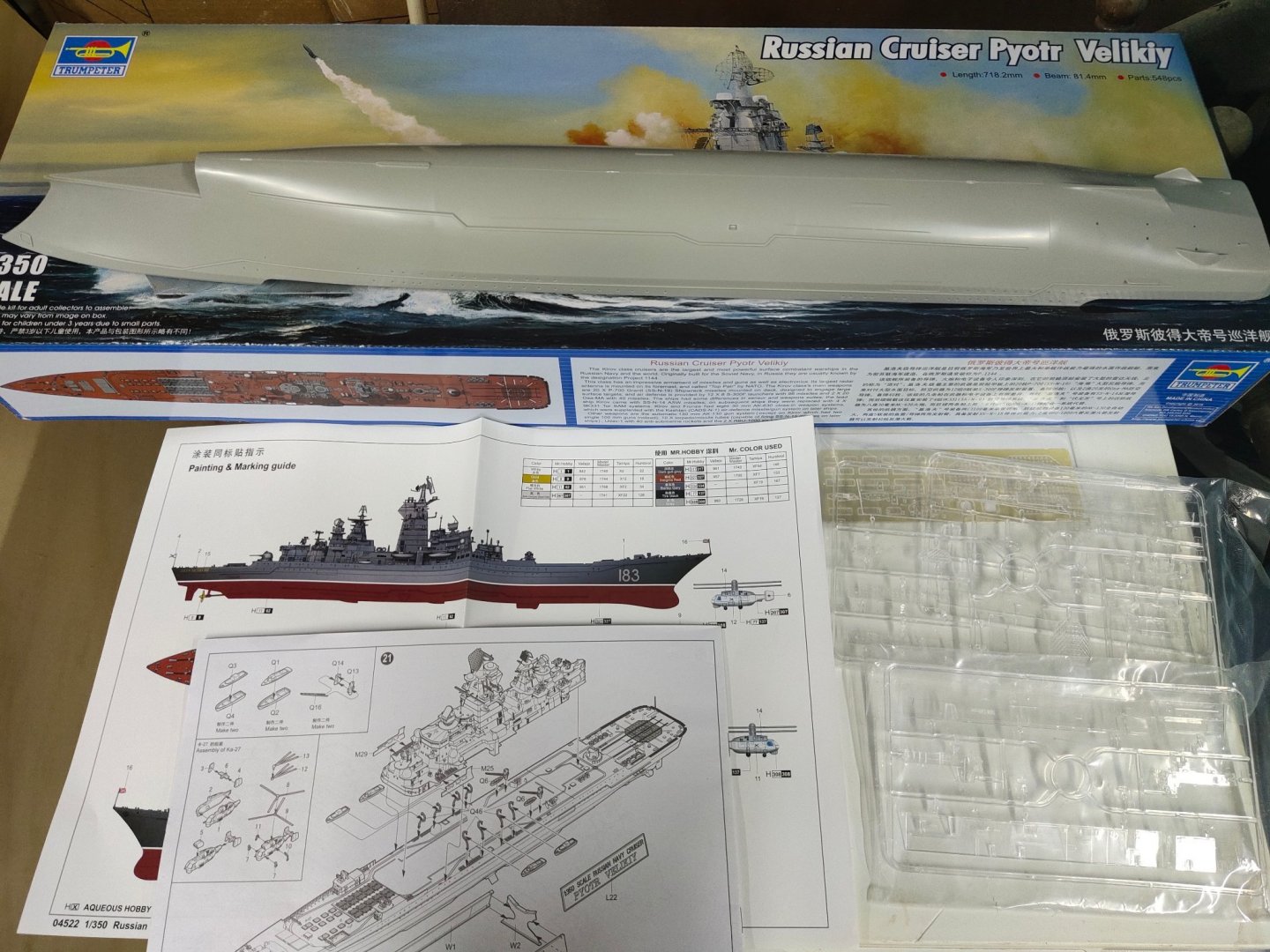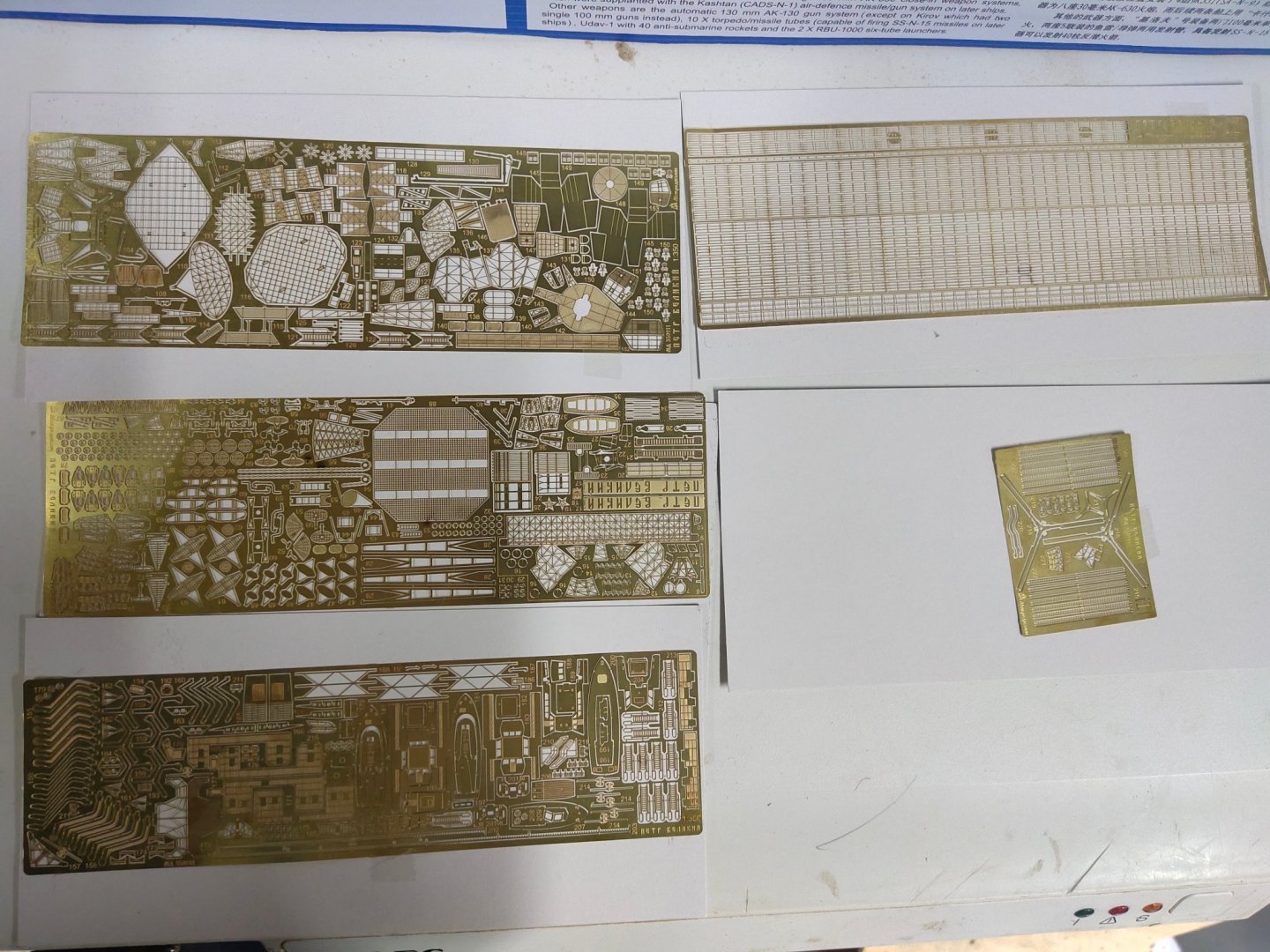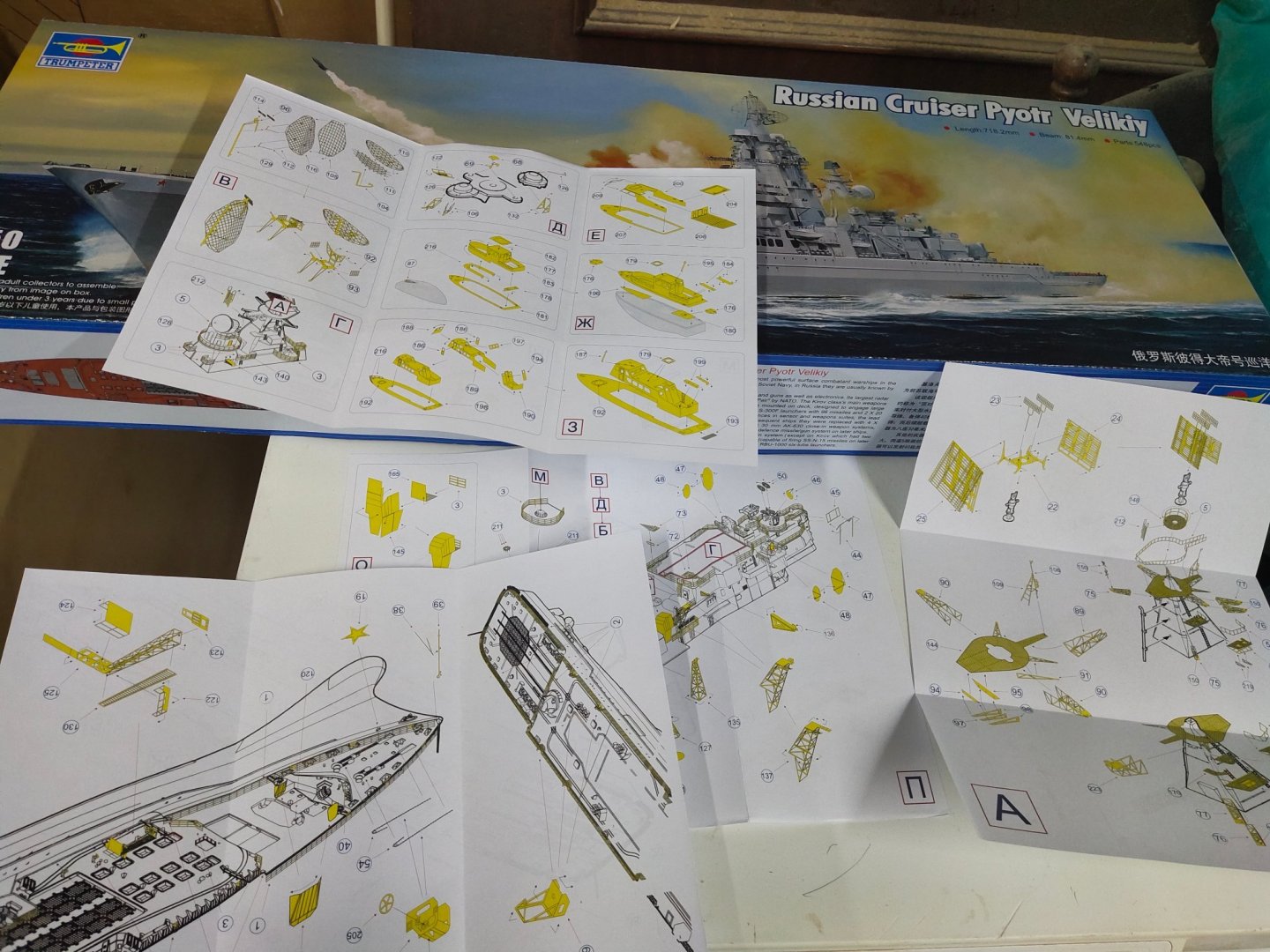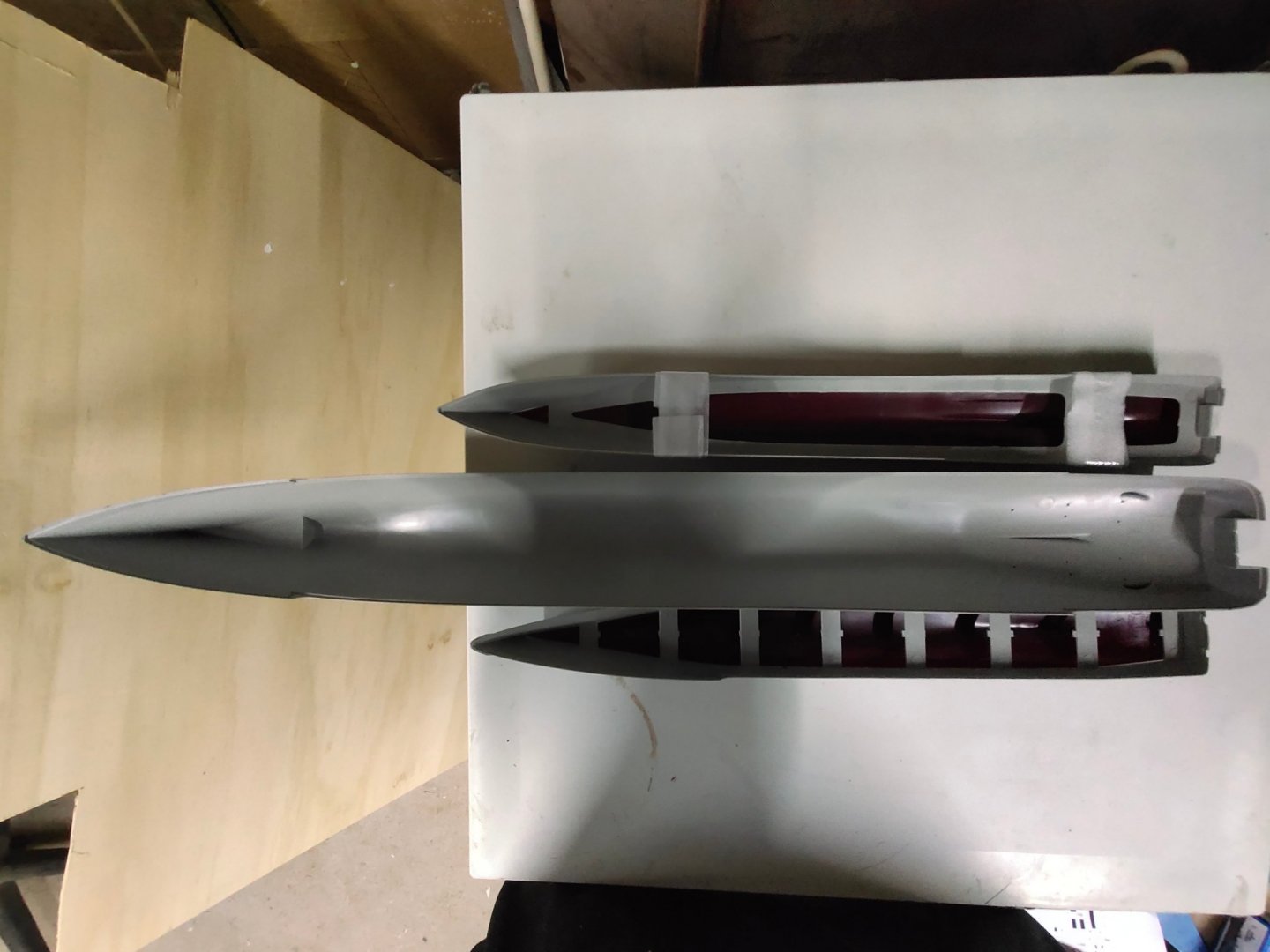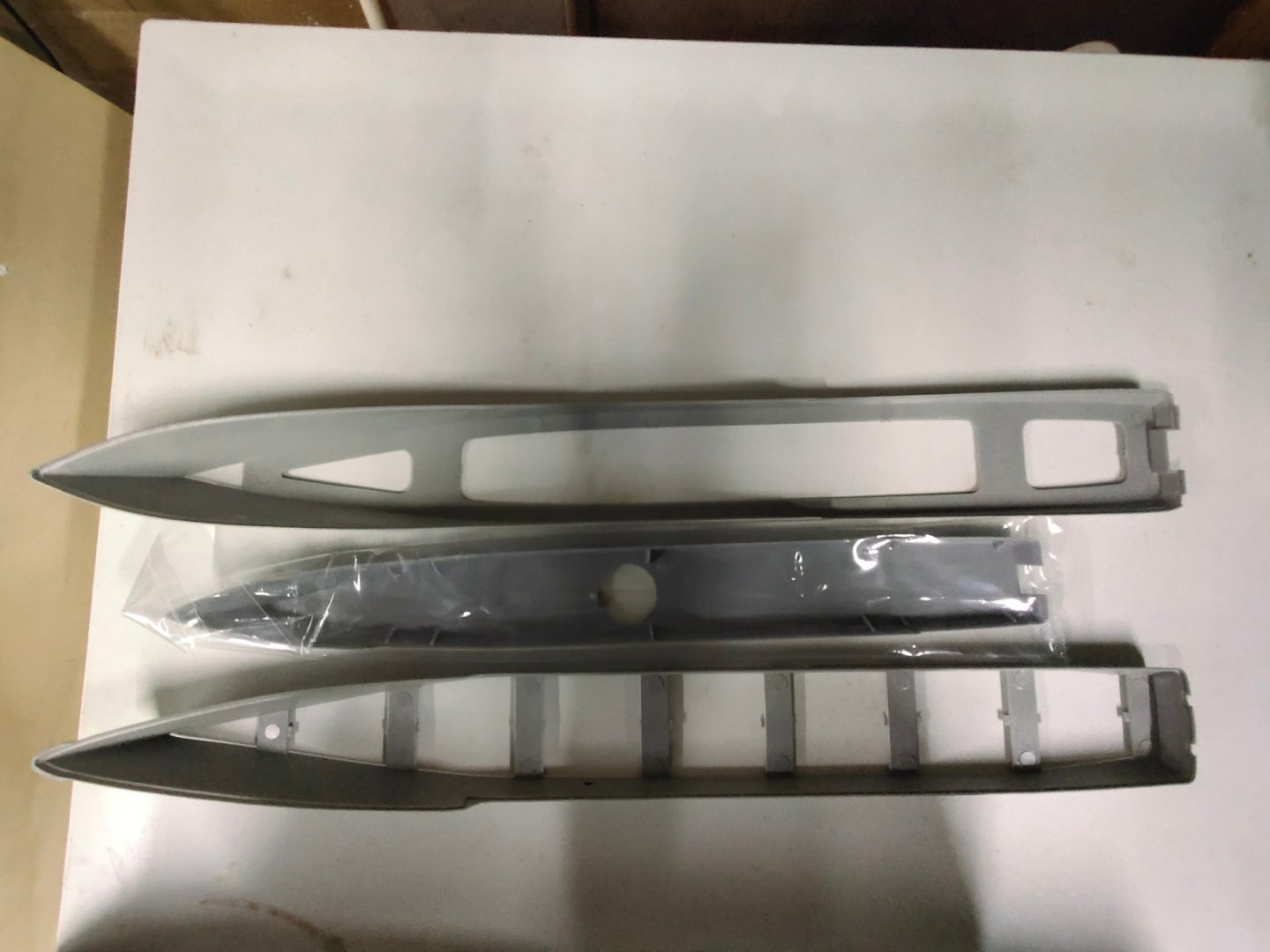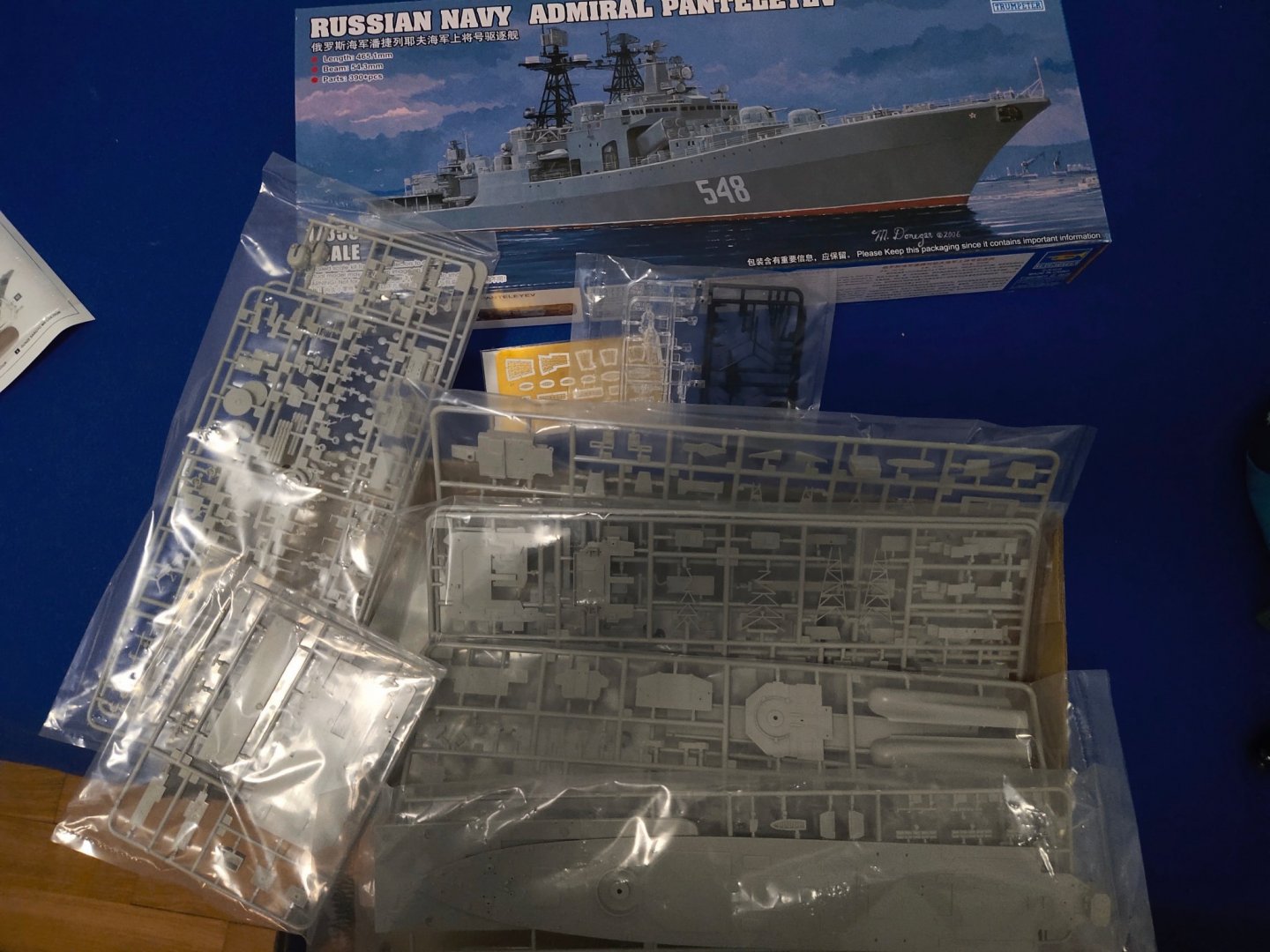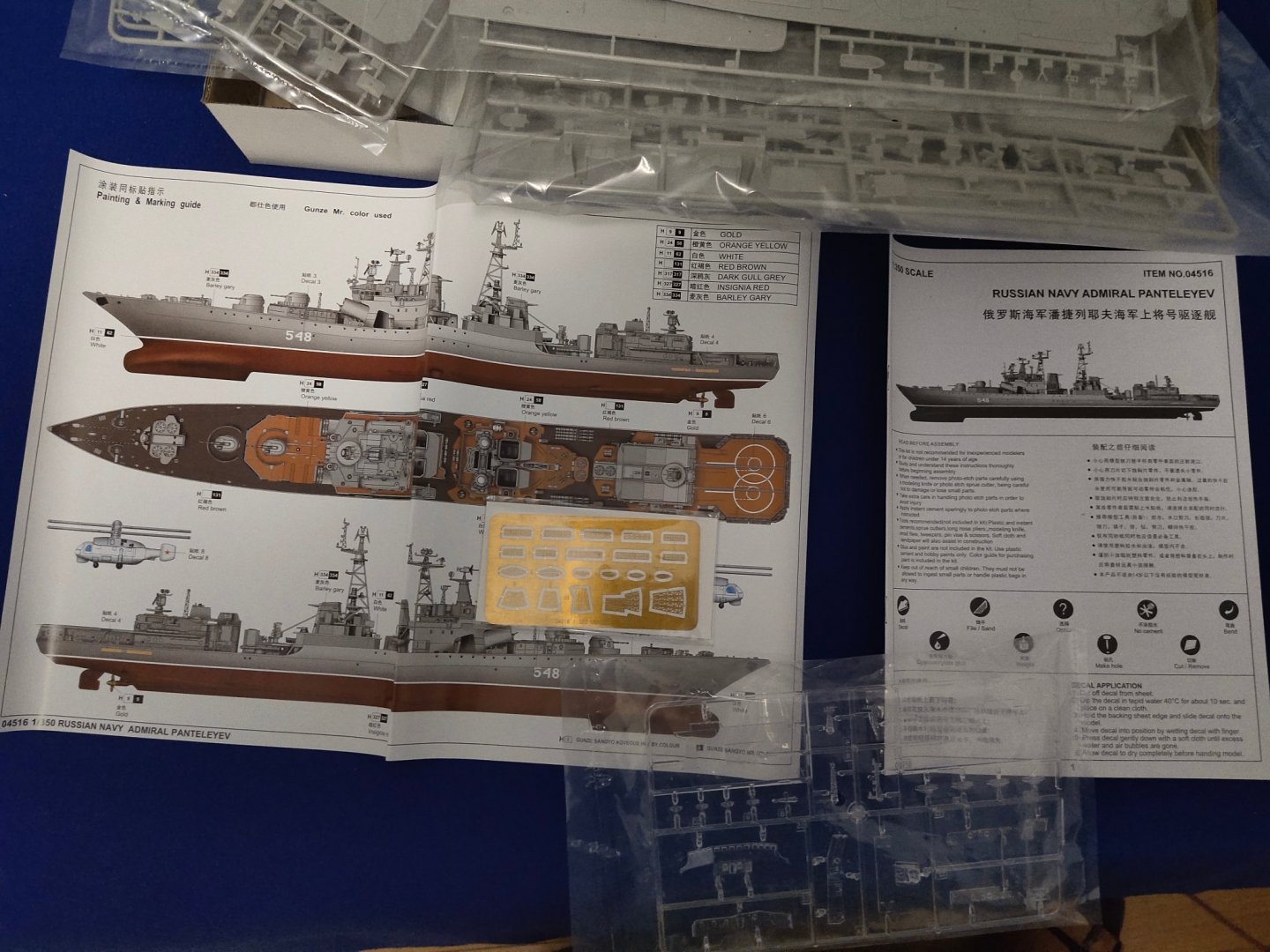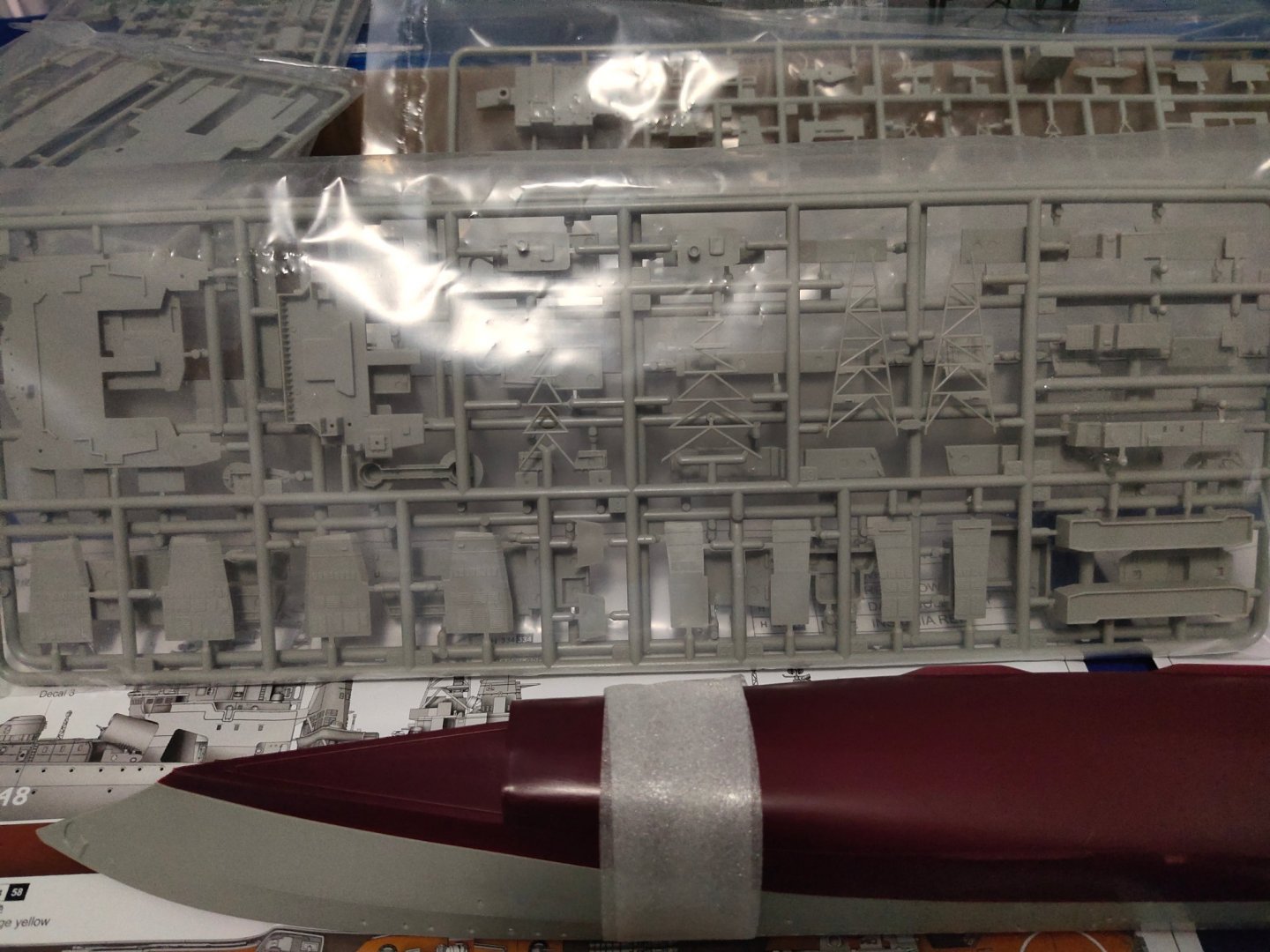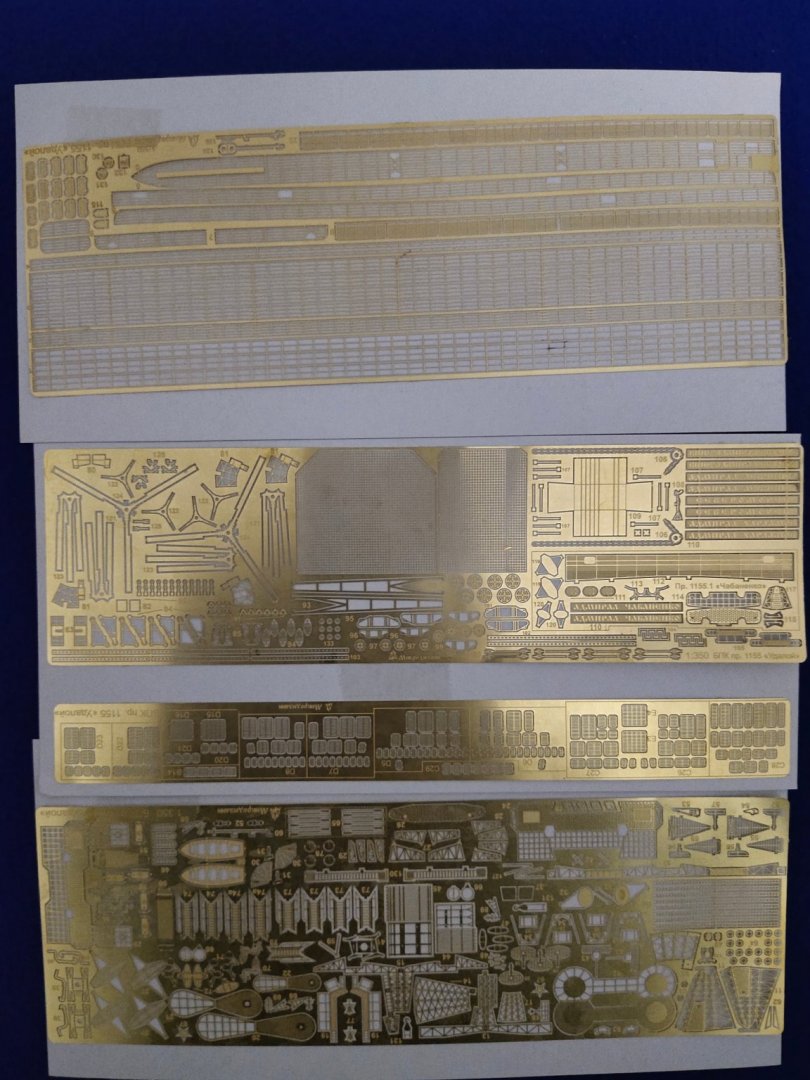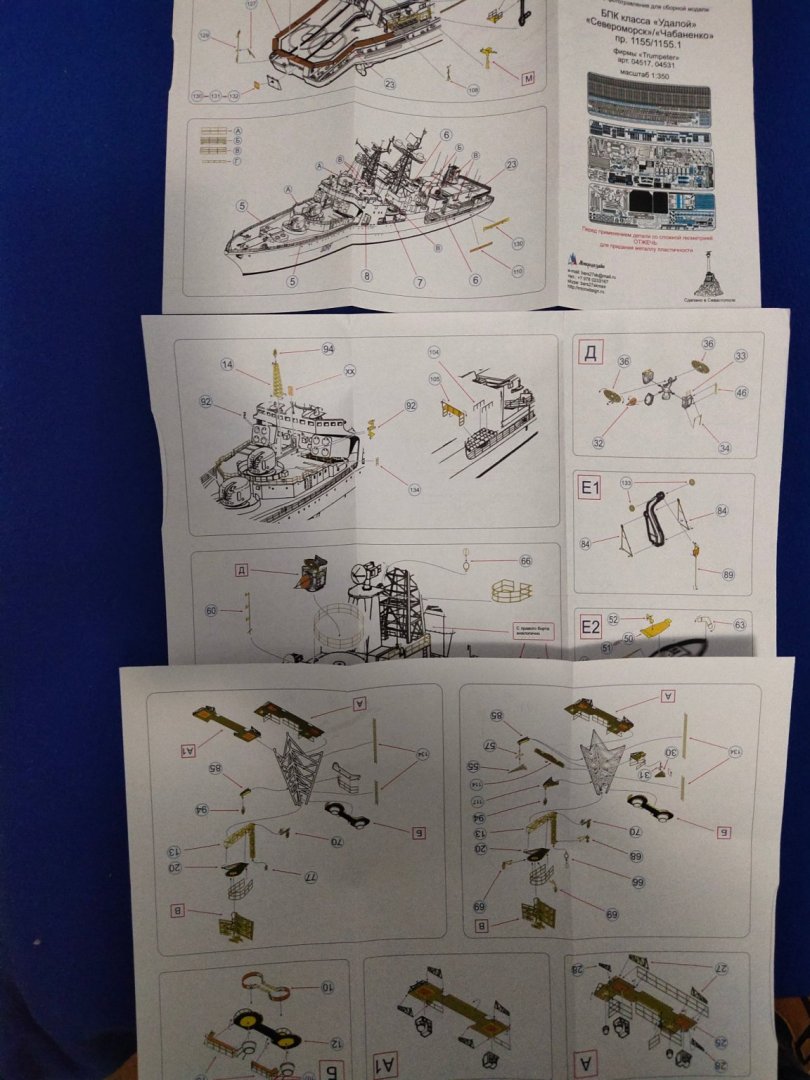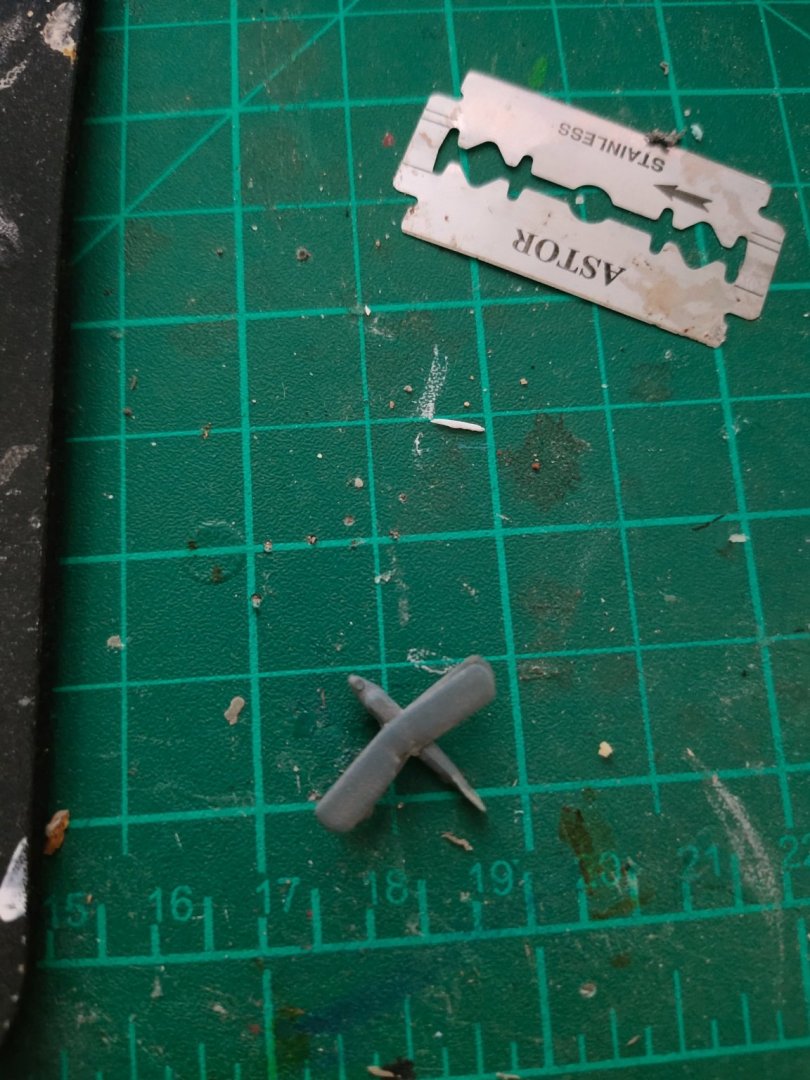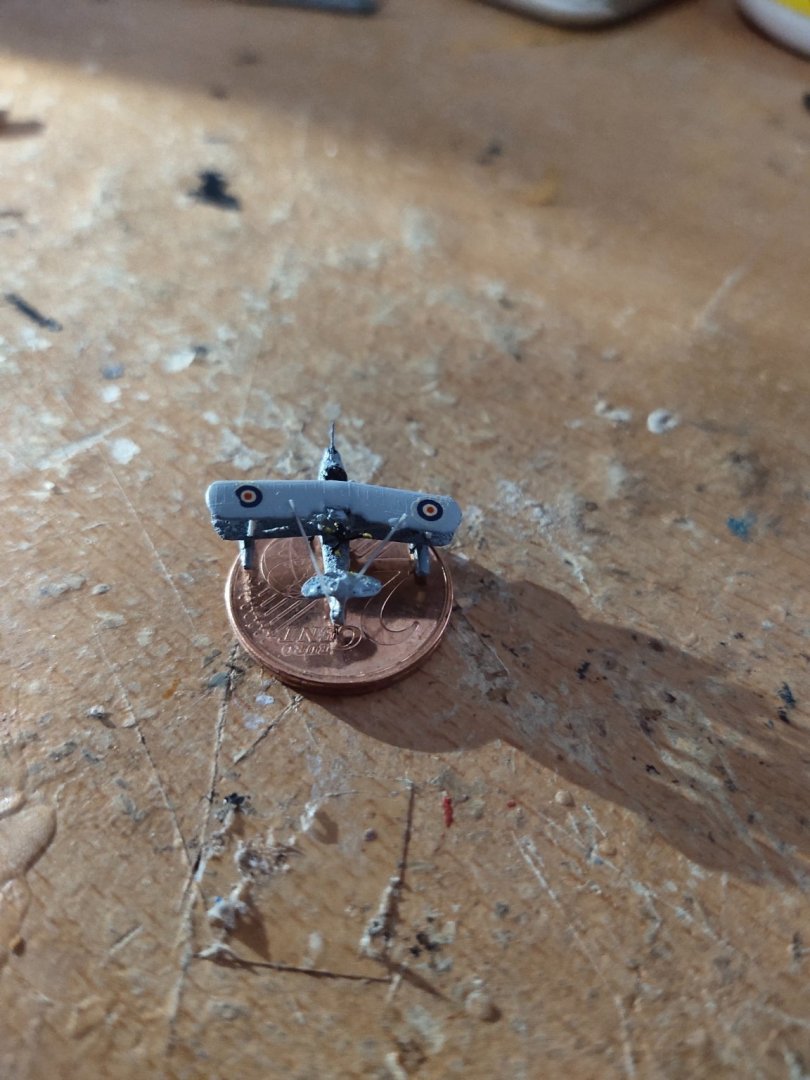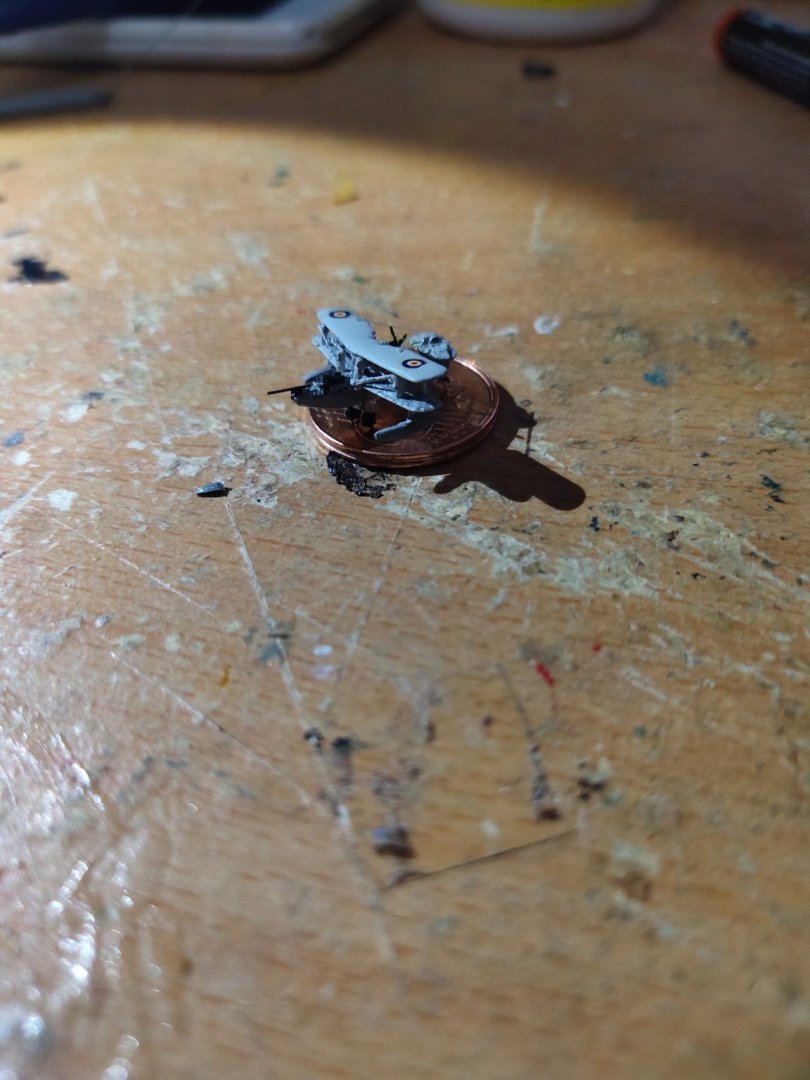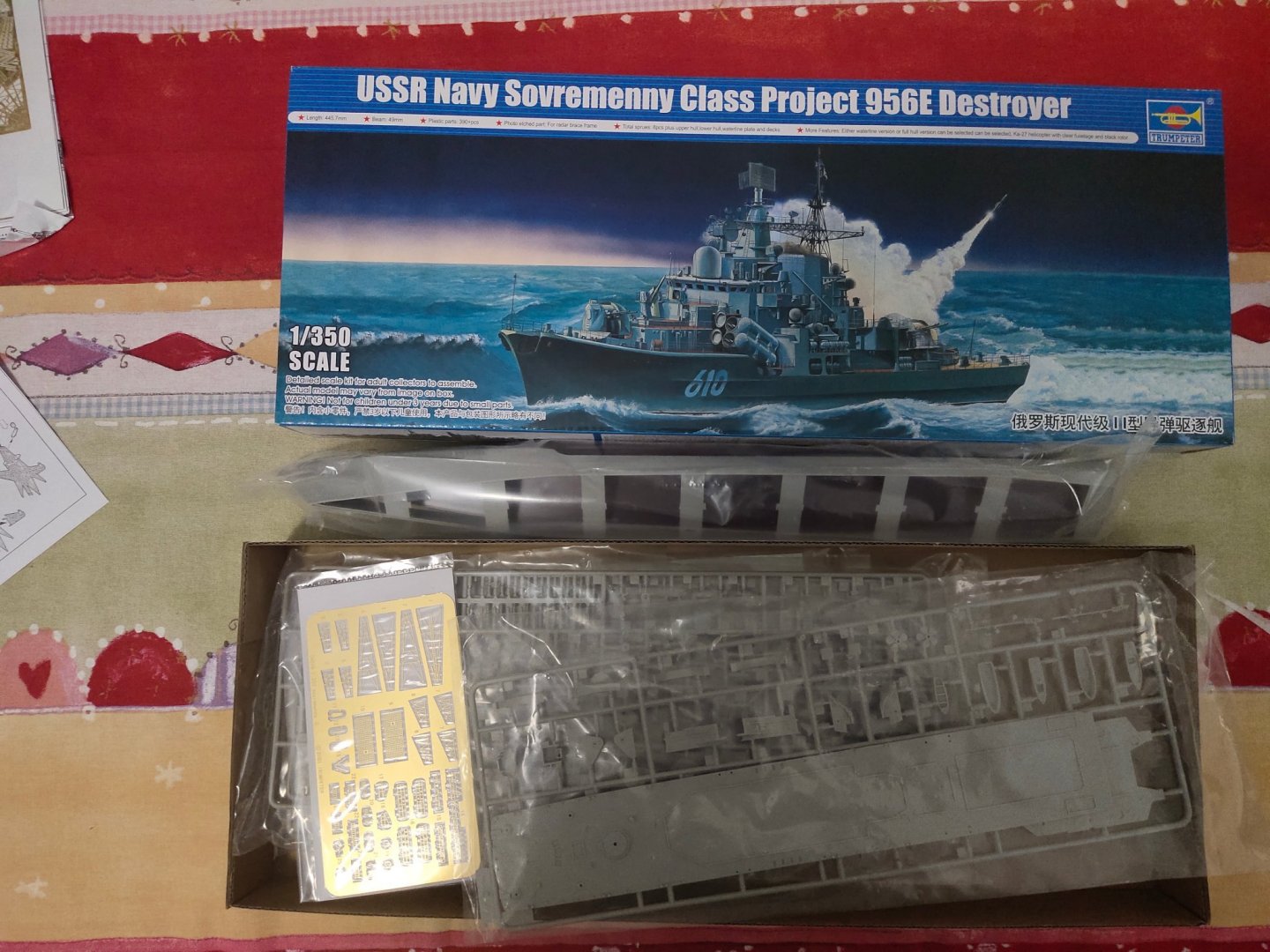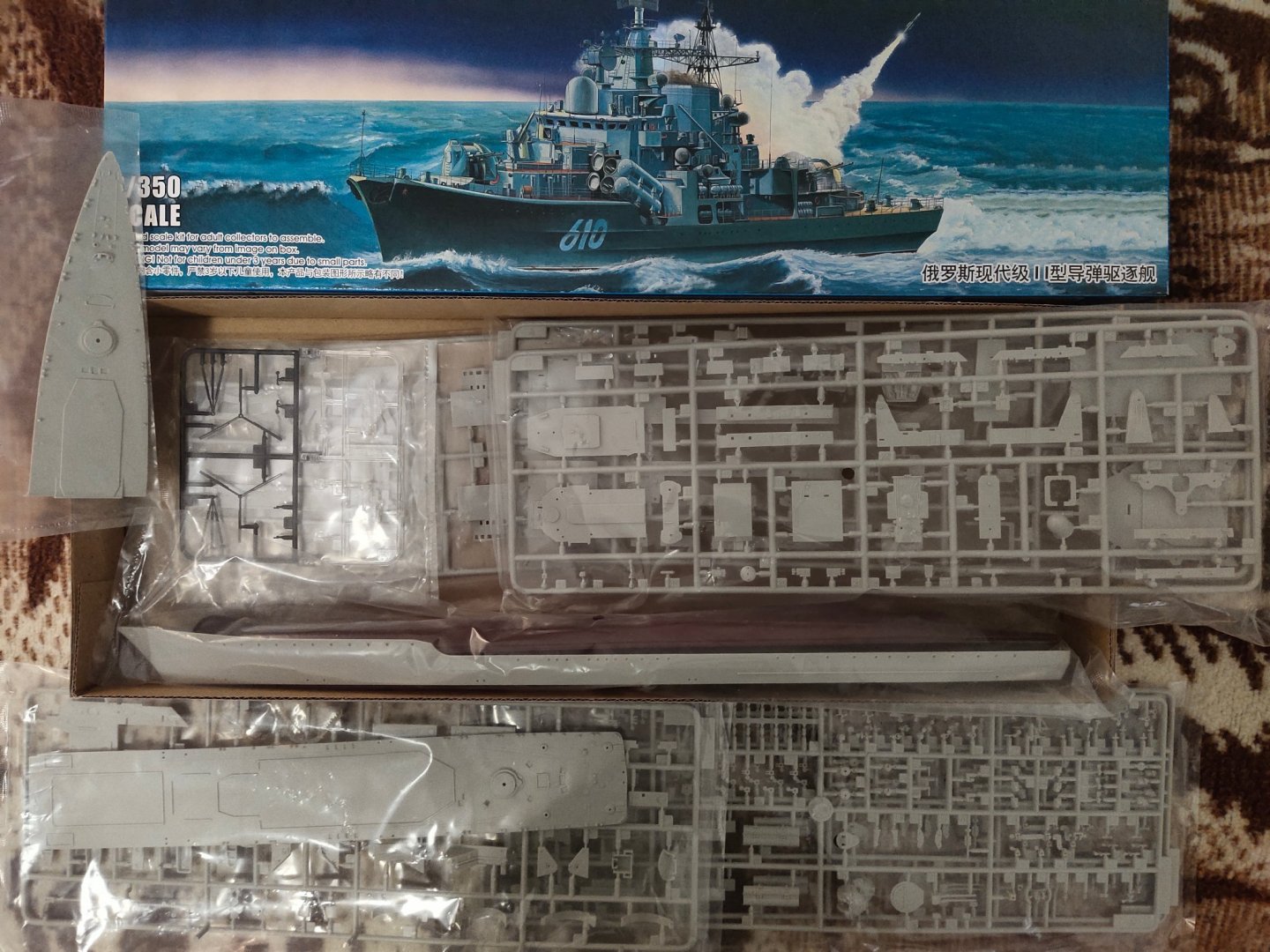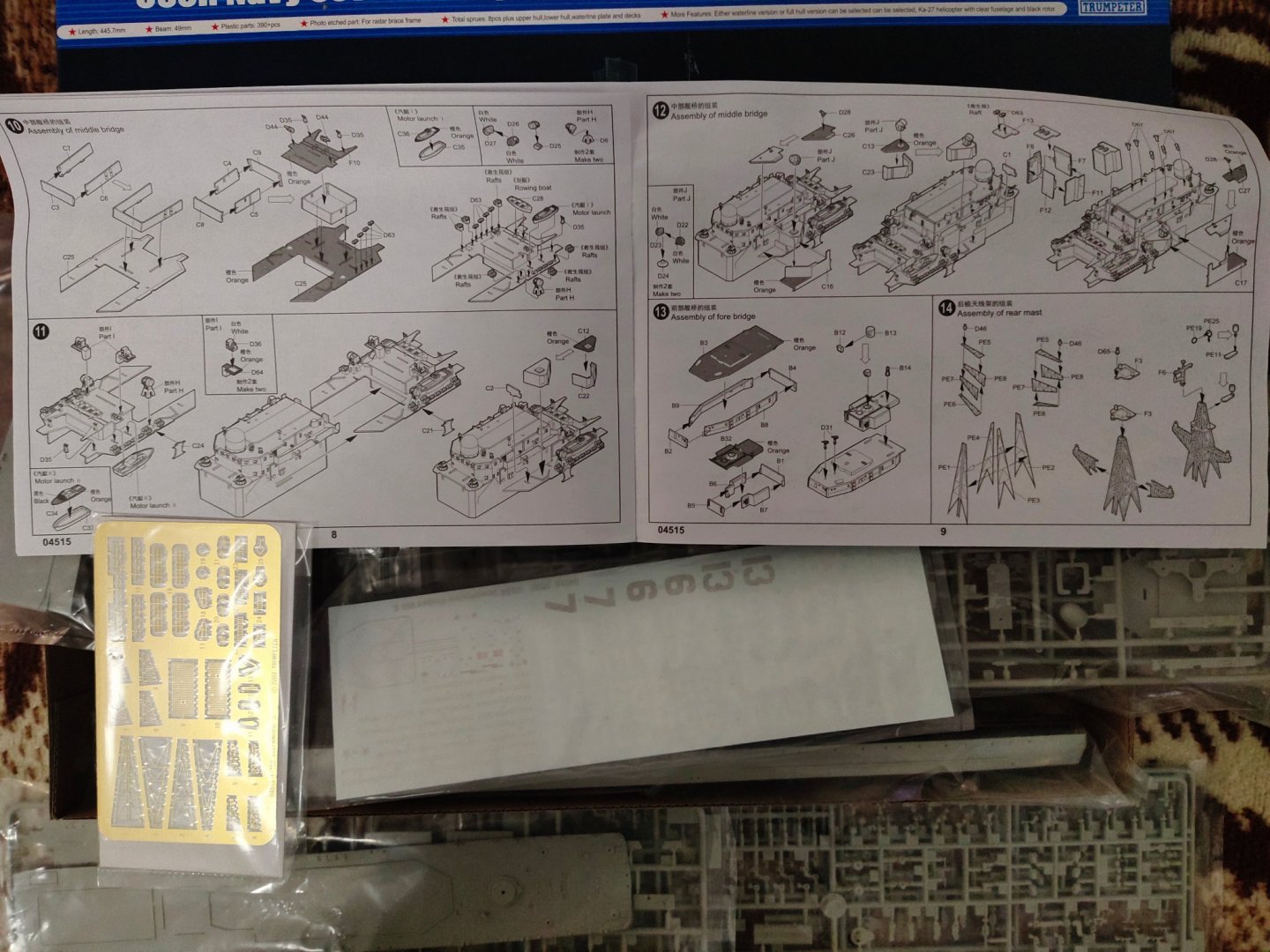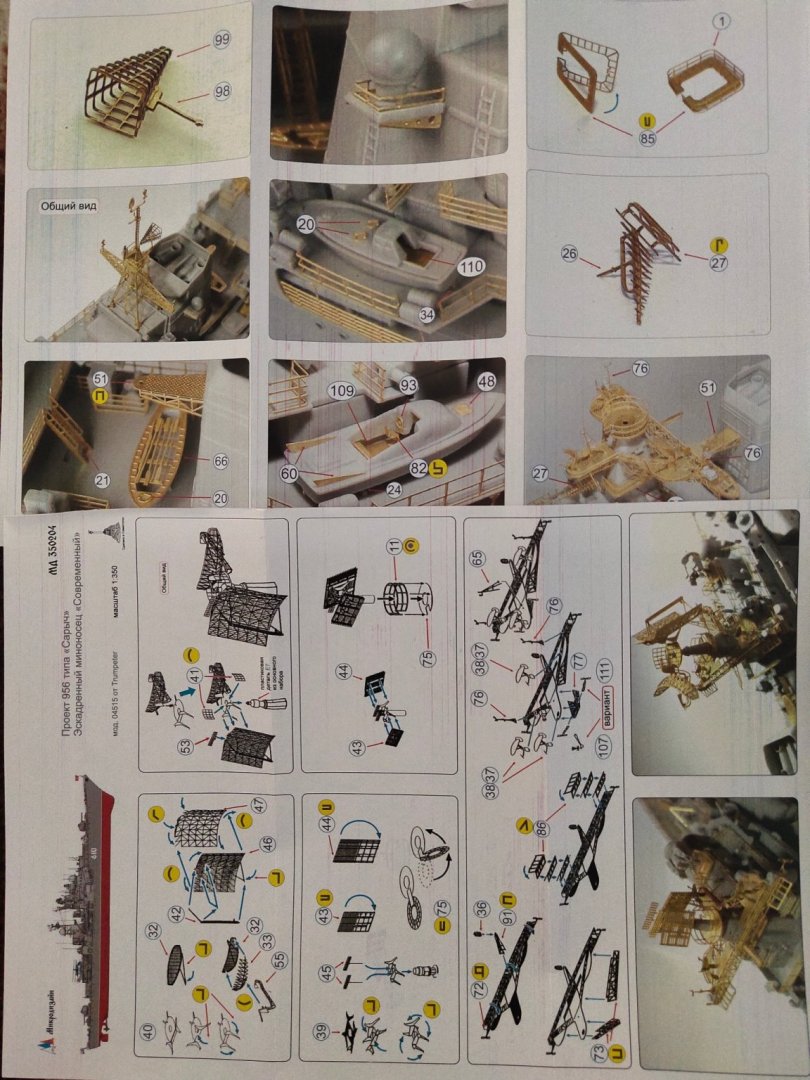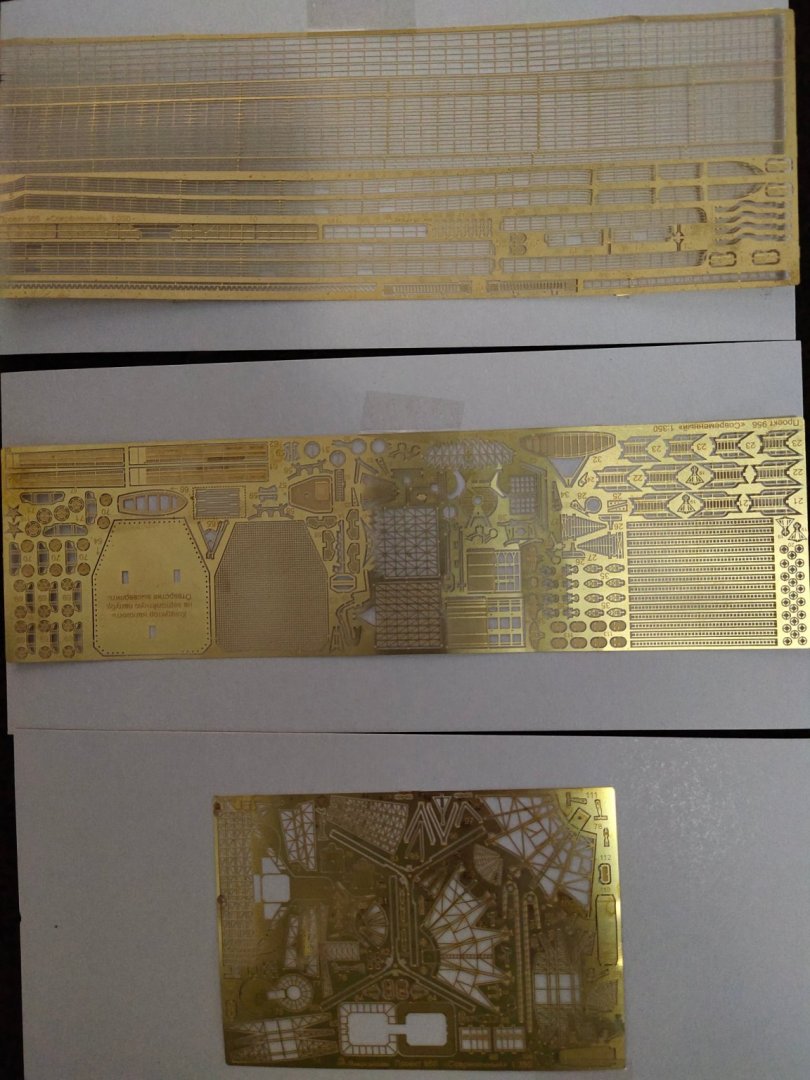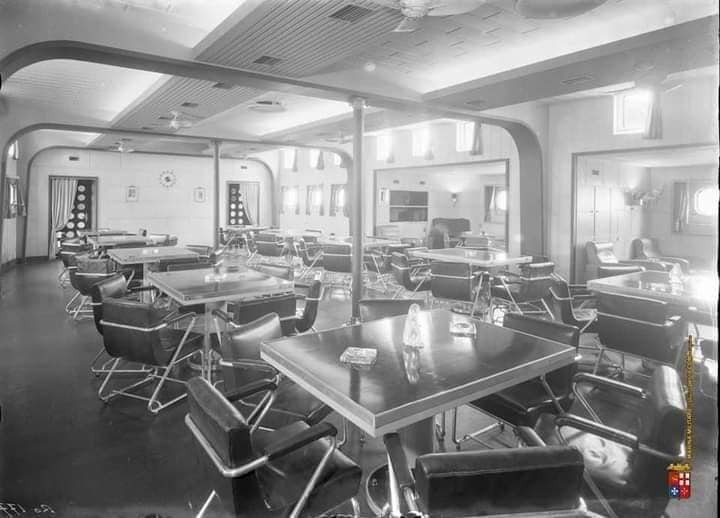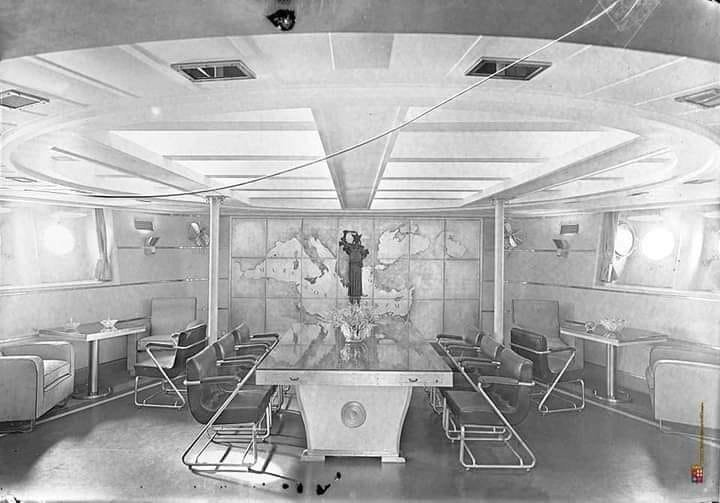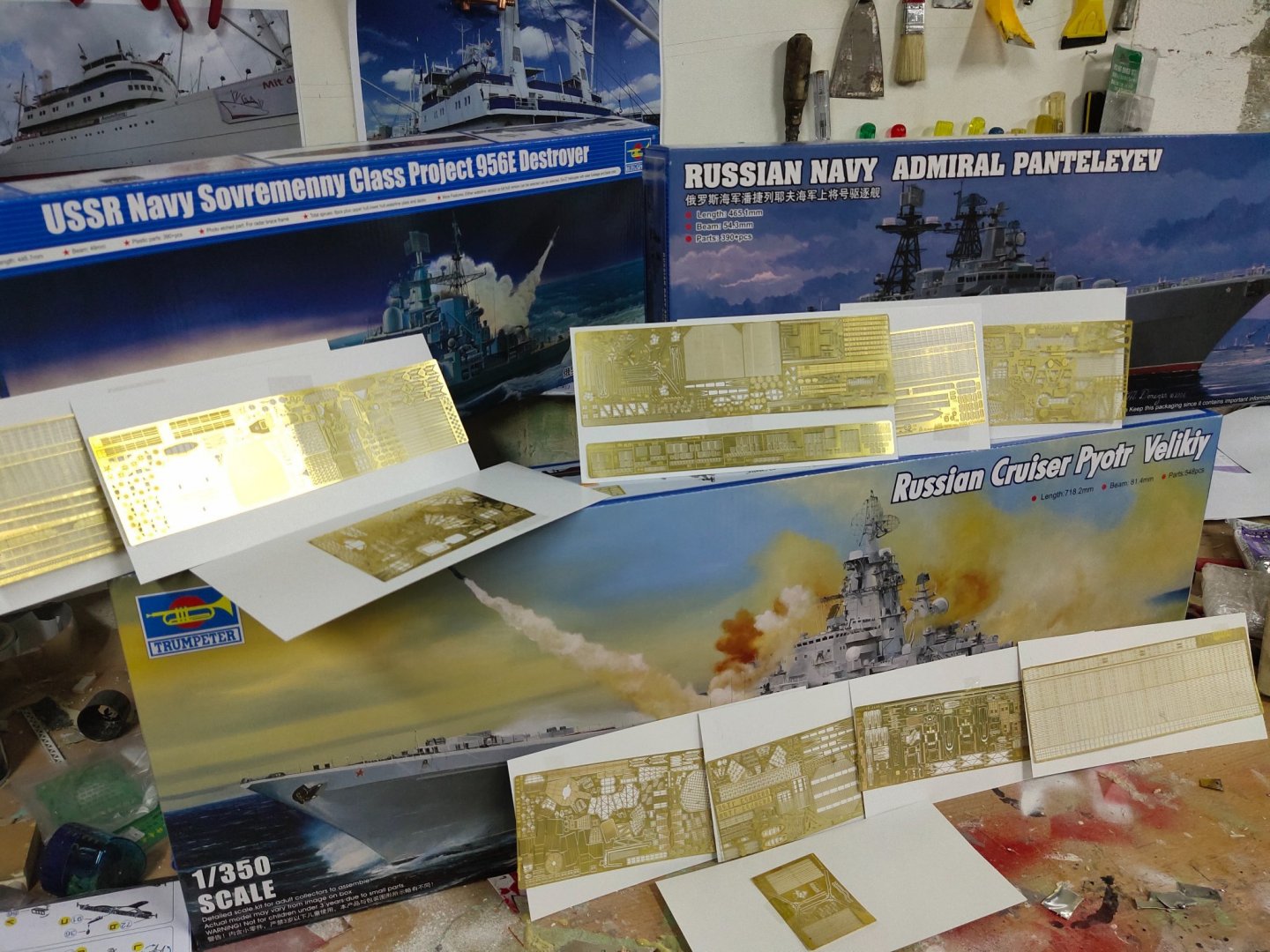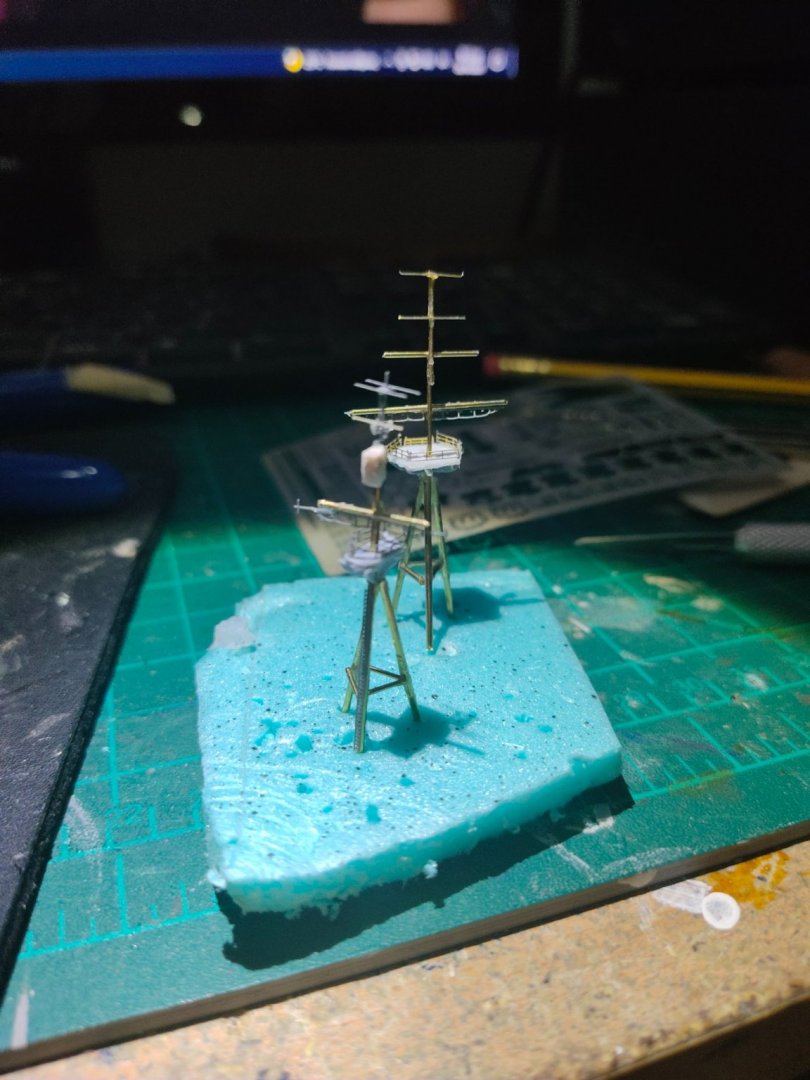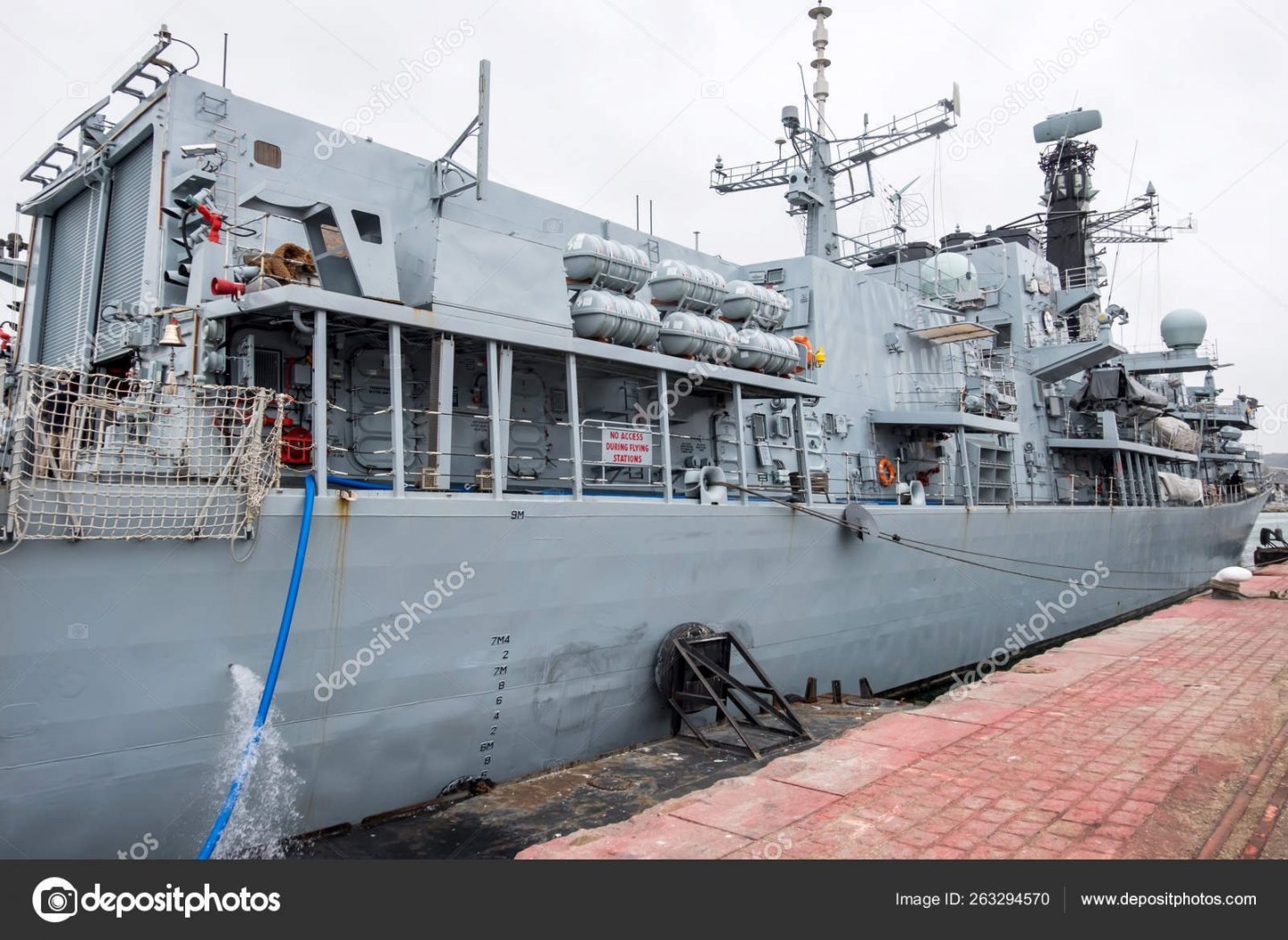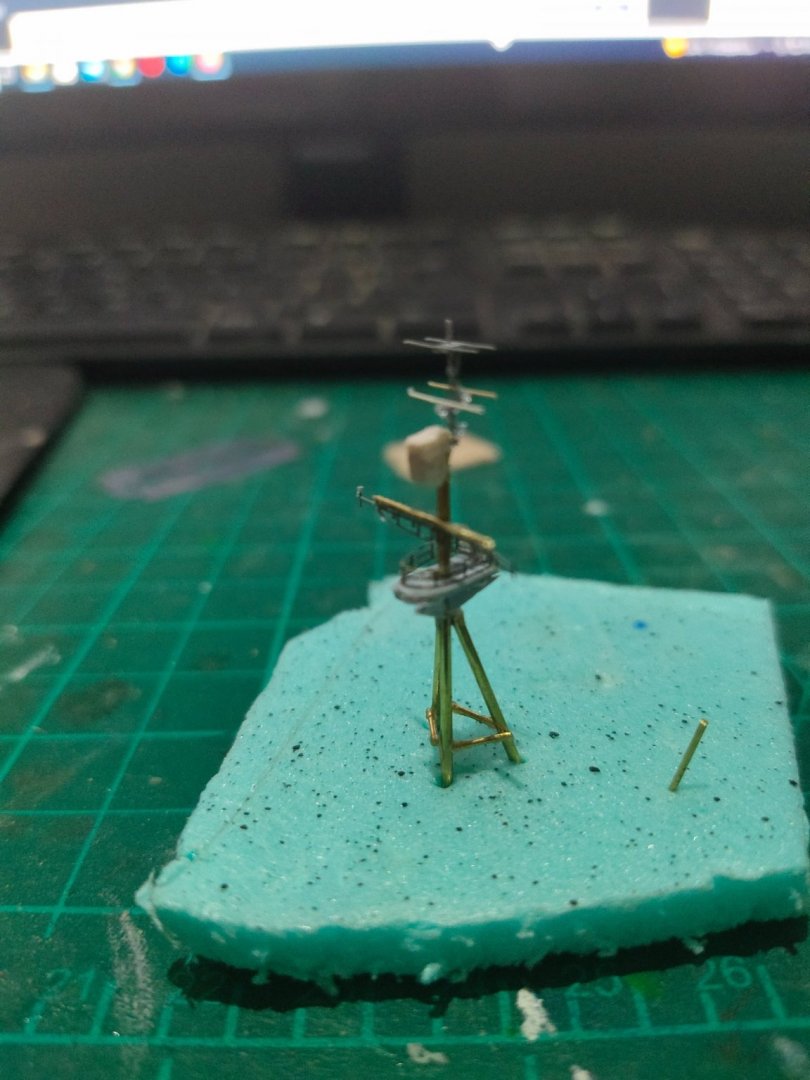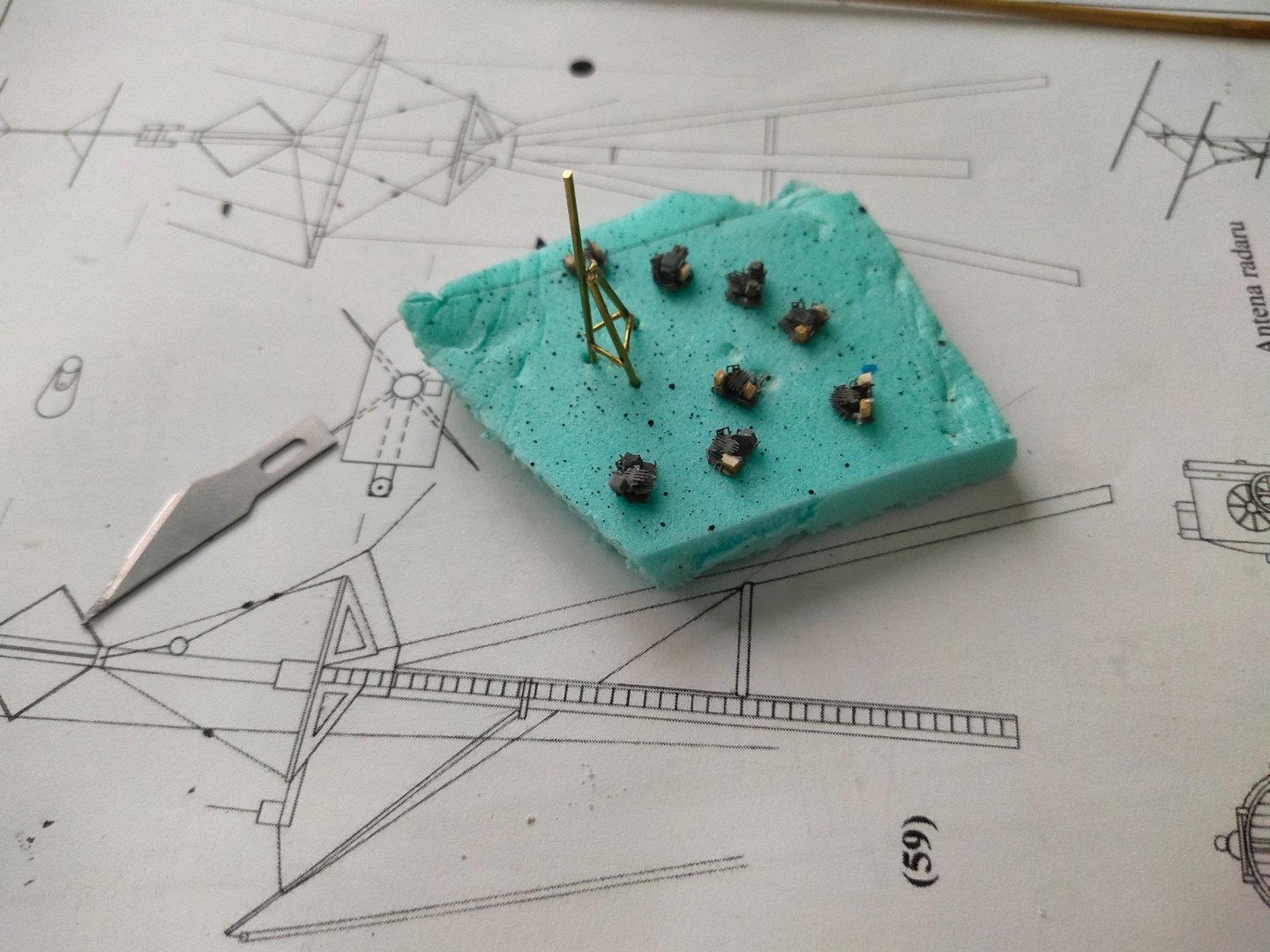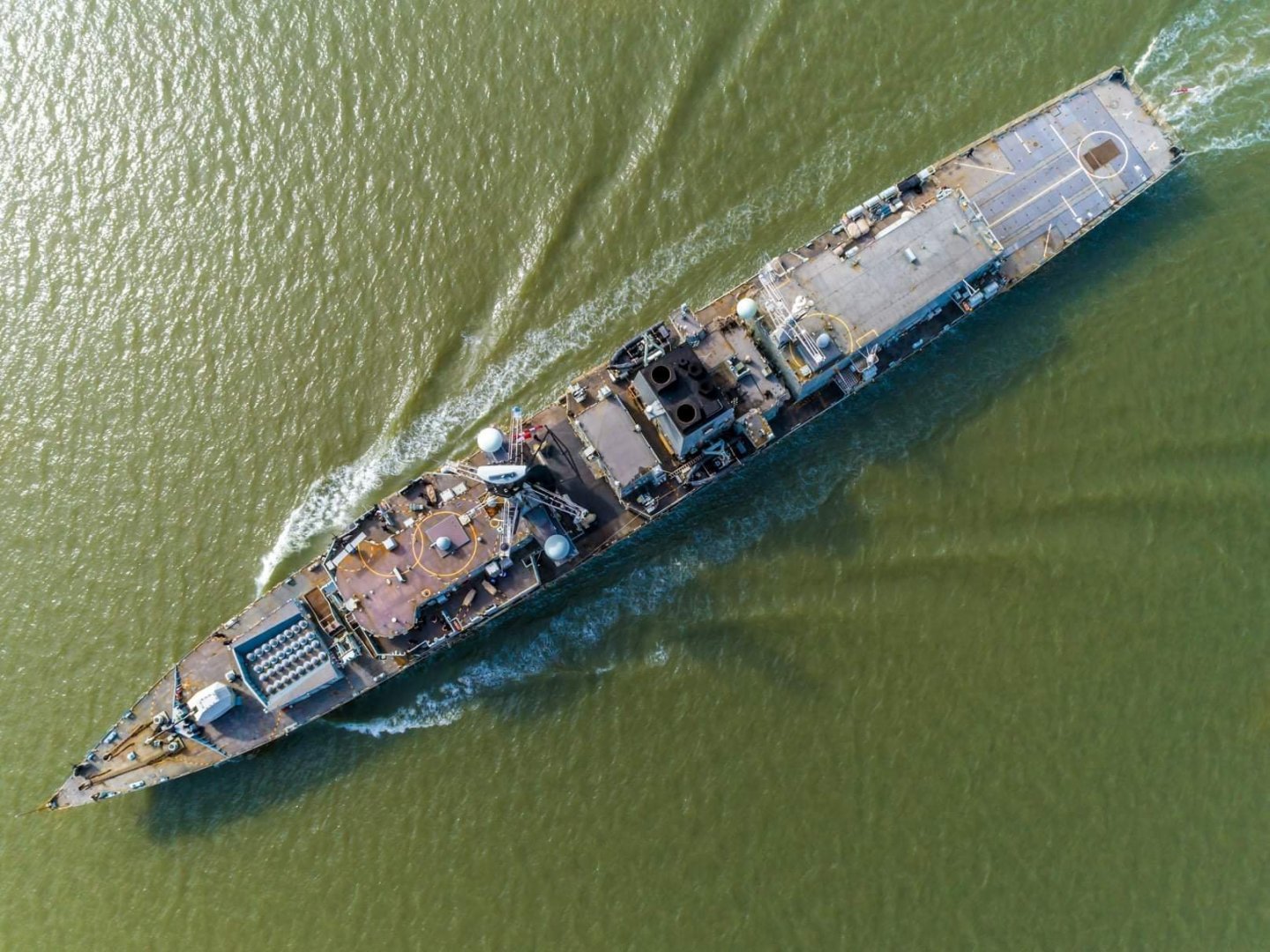
mikegr
Members-
Posts
804 -
Joined
-
Last visited
Content Type
Profiles
Forums
Gallery
Events
Everything posted by mikegr
-
Opening the box of the Pyotr Velikiy , its easy for someone to realize why these ships are considered battlecruisers. Their size is close to ww2 battleships. My workbench is occupied so i took the photos on top of my deep freezer, the only available flat space in the room. The kits itself has 550 pieces and its 72 cm long. It has 16 sprues, 3 of them in clear color and one additional with PE radar parts. The radar parts comes both in grey and clear plastic as well in PE form. The instruction manual comes in 24 pages plus the illustrated sheet for painting reference. The hull is also in one piece, no waterline option is available . The PE parts as expected are more than the previous kit and certainly they wil take this ship to another level of details. The railings provided could be enough for two medium size 1/350 ships. Finally i took two comparison shots so we can better understand the size of the kits. Pyotr Velikiy is in the middle, Panteleyev on the upper side and Sovremenny at the lower. I resized Pyotr Velikiy to 1/700 and compared again. Still stands with dignity I hope i can take some comparable shots with the finished models soon.
-
Admiral Panteleyev. This is No 04516 , PE i ordered are for the later versions of the kit 04517 Udaloy and 04531 Admiral Chabanenko. These were hard to be found in Europe, i hope there won't be dramatic differences between 04516 and 04517 same class ships. This one is slightly bigger about 46cm. There are also 390+ pieces here but i see 9 sprues. Perhaps Trumpeter has limited the counter to 390. There is waterline/full hull option except that bow sonar comes as a separate part now. A pleasant addition is the illustrated color sheet for decals and paint guide, like in most 1/700 kits. Pretty useful. I will use it as a reference for the Sovremenny kit as well. Another difference is a sprue with clear parts, not only for the helicopters but for some superstructure parts. Interesting. These ships have two distinctive complex radar towers. These are well made with good detail. Adding the PE parts i think will make the kit look quite handsome. Finally, a small set with PE parts mainly for the radar assembly is provided as well. Overall it is a nice kit comparable to the more quality series of 1/700 scale like the Battleship Roma, West Virginia and more. The PE set arrived in perfect condition. It looks quite decent and very detailed. There is an additional set comparing to Sovremenny kit containing many high detailed grills. This is definitely a welcoming addition. If built properly will result in one of the most impressive modern ship kit.
-
For the Walrus aircraft there is not PE parts. So I had to based on my skills. There is a set Walrus aircraft from flyhawk offering amazing details but waiting some weeks to get them is not an option. Besides this is an obsolete built, 100% perfection is impossible. I mostly use these models as a test field for materials and techniques that is haven't used in the past like PE, rigging and ofcourse making realistic sea bed.
-
The kit is quite similar to the 1/700 series. It has a full hull/waterline option as well as some basic PE parts for the radar mast. The total length is almost 45 cms. There are 8 sprues for a total of 390+ pieces according to the box. The instructions are in the form of a single color 12 page booklet with detailed pictures. Painting instructions are in black and white which i dont like much. Finally there is one decal sheet with lots of number decals, so builder can choose which ship of the class will resemble. As for the PE parts as wasn't sure what to expect as i had no other experience with this company. There is on sheet with railing bars, and two others with various parts. Although packed with caution i noticed a few bends. Also the last sheet had some marks like light rust (on PE?). I sanded it and gone right away. Bends also were not an issue no part seemed damaged. I did some cut testing. With used blade on hard and soft surface. Finely attached parts would cut easily while thicker joints could be cut only on hard surface without the risk of damaging the part. In short, while they are not as crispy and easy to handle as A quality PEs, there are better than various chinese makers i have used in the past. We will see in the future how they appear on the model.
-
- 136 replies
-
- strasbourg
- finished
-
(and 2 more)
Tagged with:
-
Normaly i do not collect or build 1/350 models cause of their bulk. However as i was browsing i found a company called microdesign specialized in PE parts for Russian - Soviet (and not only) model planes, ships ,armor etc. They have over 5500 product codes, pretty impressive. Their prices were quite tempting, especially off Ebay were -30% . So i placed the order right from a Russian store, they even respond on Sunday and after two weeks i got them in hand. Meanwhile i had ordered the ship kits from nearby Bulgaria, got them in just 2 days. I will start from the cheapest one Project 956 Sovremenny. For the 26 euros paid i didn't expect much but a 3 ship display would look great so why not...
-
Quite fast and clean job. I will use this thread as a guide for my own kit with WE parts when i decide to deal with it. Perhaps in 2025
-
I got a set used for micro electronic repairs. I also got a few of cheaper ones which I sharpened with dremel tool and turned equally good to the pro set Frequently sharpening of twizzers, pliers and other tools removes glue, paint and keeps them very effective no matter how they cost.
- 174 replies
-
- prinz eugen
- trumpeter
-
(and 2 more)
Tagged with:
-
ROK Navy has some nice Aegis destroyers. That would be an interesting theme. They are also very capable carring almost 130 VLS tubes for weapons.
-
That rivet detail is definitely overscaled. Flyhawk has gone too far. Rigging also is. But rigging for me is essential. That rivet thing...I don't know.
-
This photo is taken in 2021. The ship HMS Argyll, as well as Montrose have their own page, where you can find more information and photos https://twitter.com/hmsmontrose?lang=el https://twitter.com/search?q=hms argyll&src=typed_query
-
Like I have said in previous thread the most durable and sticky primer for shiny metal parts is epoxy primer like those used in car industry. I always prime my PE parts them work with them with no issues.
- 174 replies
-
- prinz eugen
- trumpeter
-
(and 2 more)
Tagged with:
-
An aerial photo of a type 23 frigate. Just to get an idea of how the dark grey deck can turn to red brown cause of rust and weathering, in case you are interested.
-
This is more of a toy than a kit. I hope it worth the time and extra spending on PE and other upgrades.
About us
Modelshipworld - Advancing Ship Modeling through Research
SSL Secured
Your security is important for us so this Website is SSL-Secured
NRG Mailing Address
Nautical Research Guild
237 South Lincoln Street
Westmont IL, 60559-1917
Model Ship World ® and the MSW logo are Registered Trademarks, and belong to the Nautical Research Guild (United States Patent and Trademark Office: No. 6,929,264 & No. 6,929,274, registered Dec. 20, 2022)
Helpful Links
About the NRG
If you enjoy building ship models that are historically accurate as well as beautiful, then The Nautical Research Guild (NRG) is just right for you.
The Guild is a non-profit educational organization whose mission is to “Advance Ship Modeling Through Research”. We provide support to our members in their efforts to raise the quality of their model ships.
The Nautical Research Guild has published our world-renowned quarterly magazine, The Nautical Research Journal, since 1955. The pages of the Journal are full of articles by accomplished ship modelers who show you how they create those exquisite details on their models, and by maritime historians who show you the correct details to build. The Journal is available in both print and digital editions. Go to the NRG web site (www.thenrg.org) to download a complimentary digital copy of the Journal. The NRG also publishes plan sets, books and compilations of back issues of the Journal and the former Ships in Scale and Model Ship Builder magazines.

